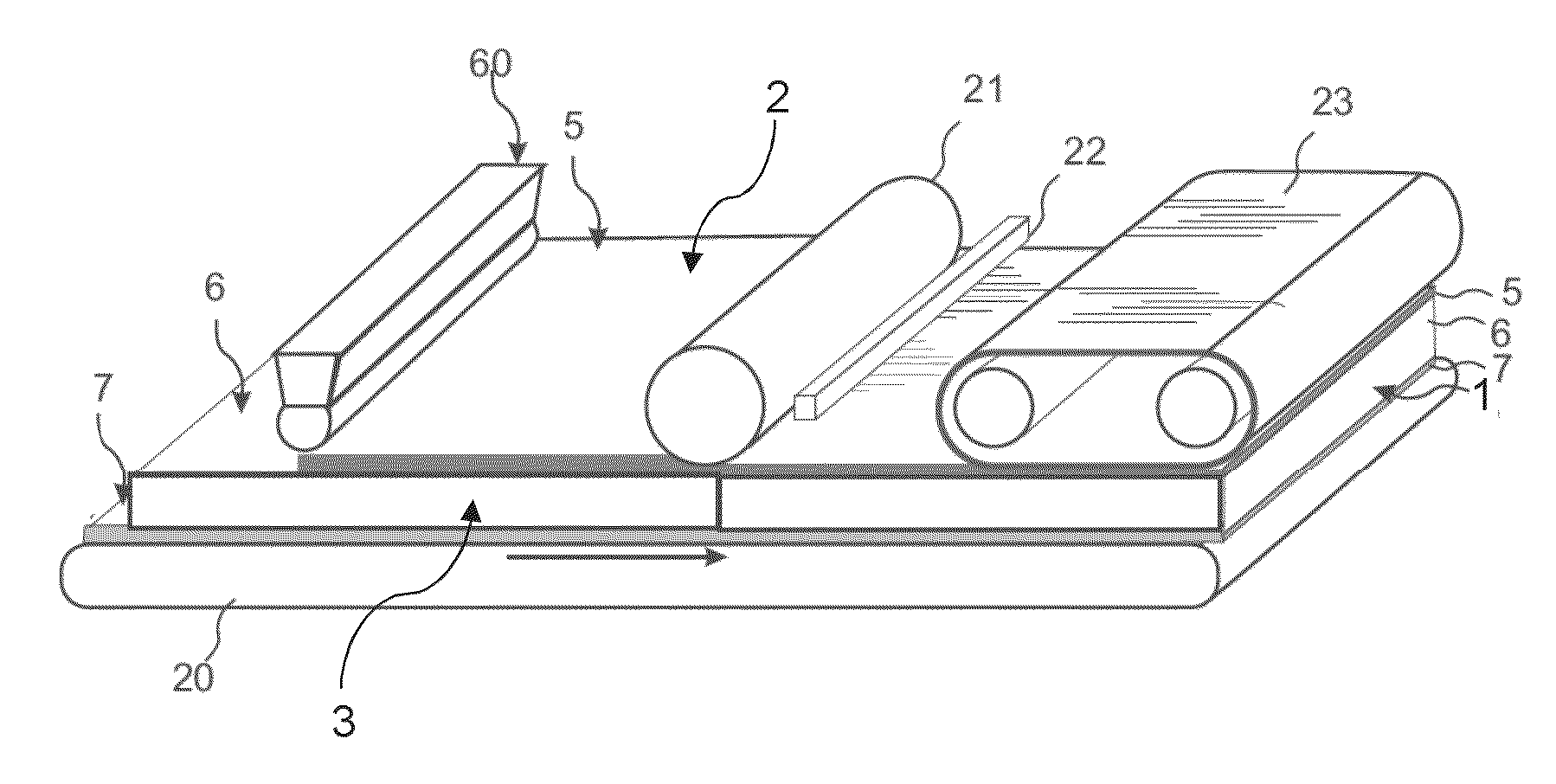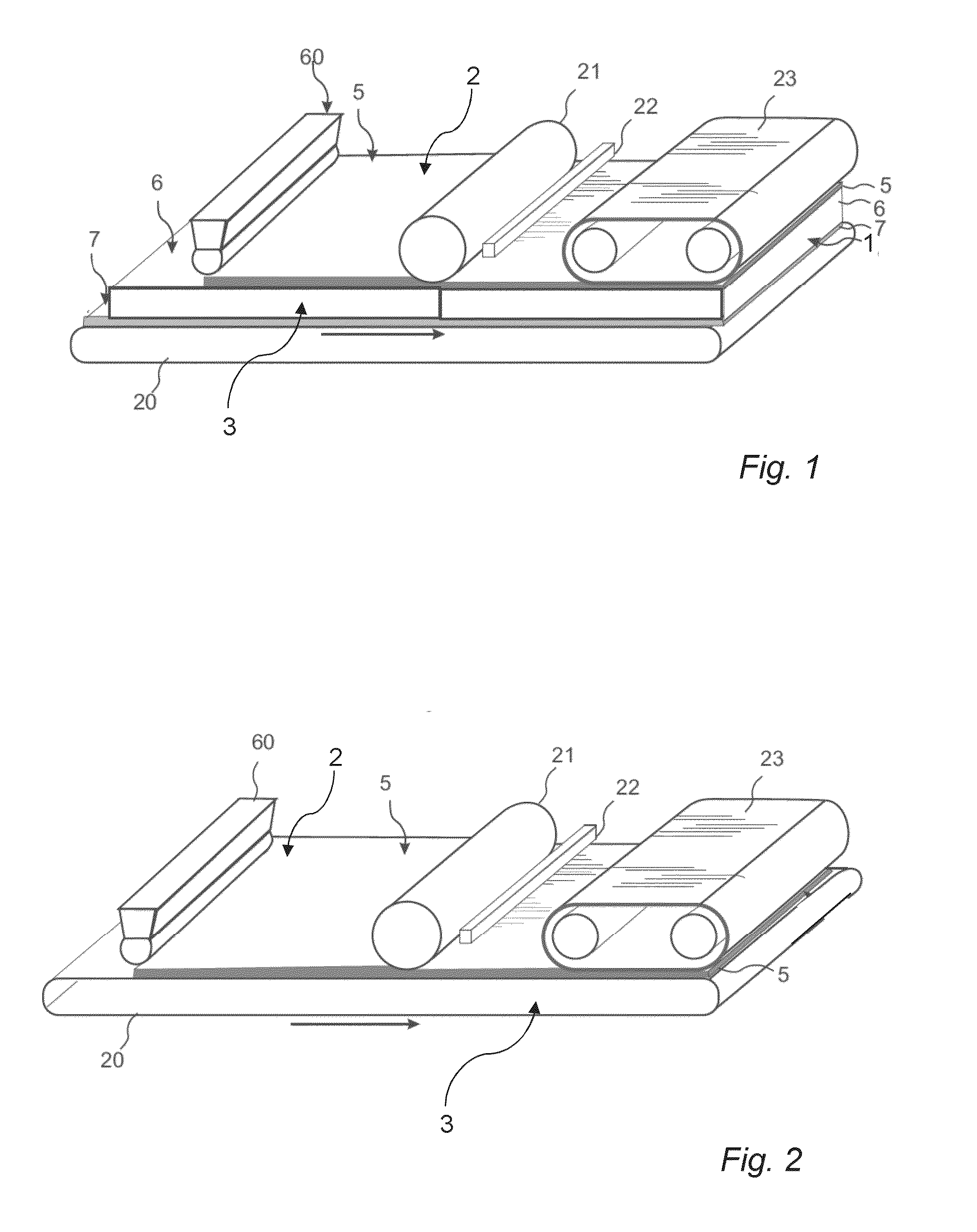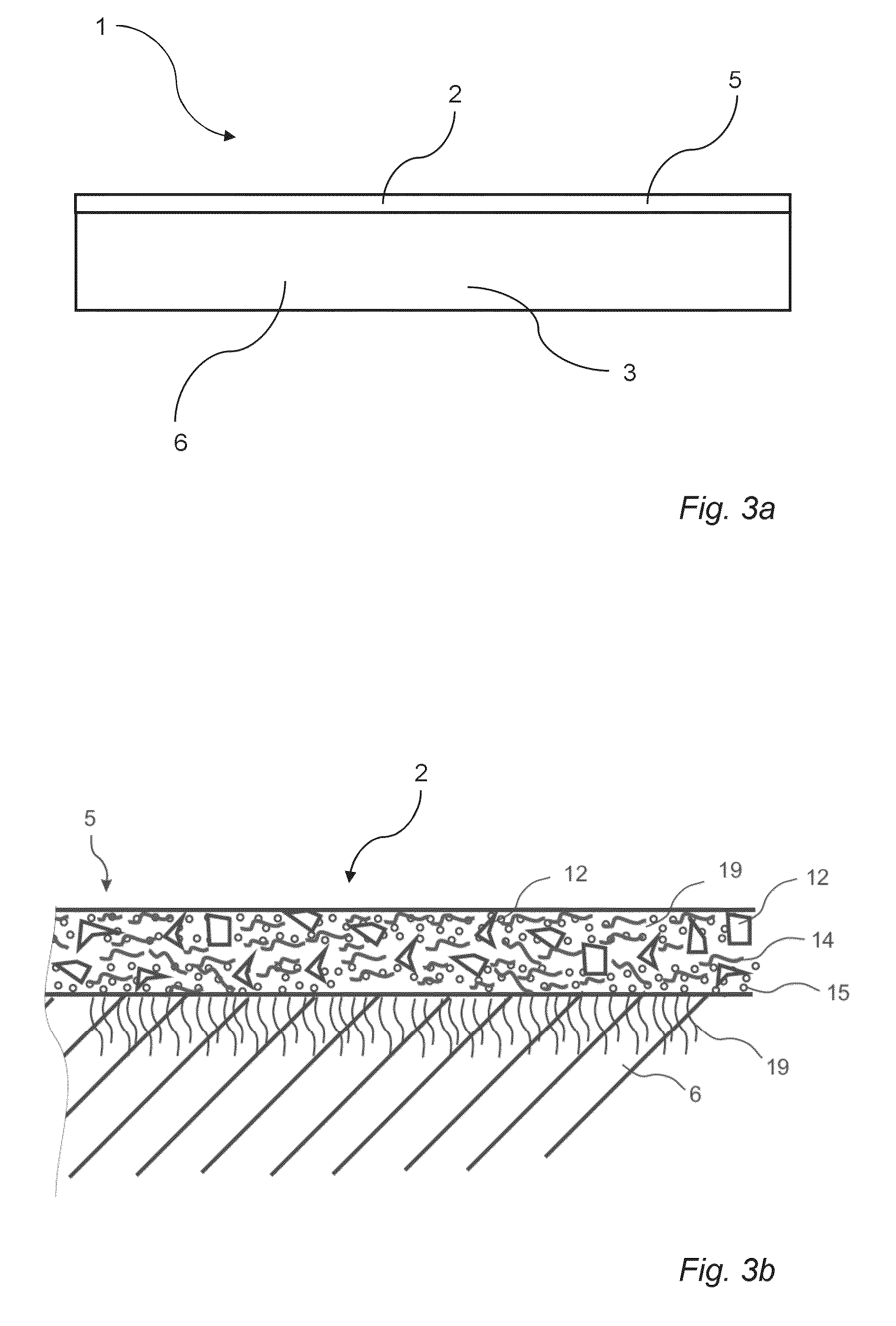Method for producing a building panel
a building panel and production method technology, applied in the field of building panel production, can solve the problems of limited staining resistance, hazy surface with high opacity, limited staining resistance, etc., and achieve the effect of improving the staining resistance of the building panel
- Summary
- Abstract
- Description
- Claims
- Application Information
AI Technical Summary
Benefits of technology
Problems solved by technology
Method used
Image
Examples
example 1
Powder-Based Overlay Formed by a Dry Mixing Process
[0125]Spray dried melamine formaldehyde resin (MF) (64 wt %), bleached wood particle (27 wt %), additives in form of a release agent PAT523W (0.5 wt %), a wetting agent PAT959 / F (0.5 wt %), a catalyst PATHS710 (0.5 wt %), and aluminium oxide (9 wt %), were mixed in the dry state for 15 minutes and then used as powder-based overlay on a black powder based decor.
[0126]The build-up was pressed at 170° C. and 40 bar during 35 seconds.
[0127]The outcome was a hazy greyish surface, with weaknesses in staining resistance.
example 2
Powder-Based Overlay Formed by a Combined Wet and Dry Mixing Process
[0128]424 g of dry wood particle was mixed with 100 g of aluminium oxide and %), and additives in form of a release agent PAT523W (0.5 wt %), a wetting agent PAT959 / F (0.5 wt %), a catalyst PATHS710 (0.5 wt %), to form a dry mix. 1200 g of wet melamine formaldehyde resin (50 wt % MF) was added to the dry mix and mixed for 10 min. The final mix, still behaved as a powder, containing the extra added water.
[0129]The powder was dried at 60° C. for 24 h and then milled to a size less than 300 μm.
[0130]The resulting dry composition of the powder produced was 55 wt % melamine formaldehyde resin (MF), 36 wt % bleached wood particle and 9 wt % aluminium oxide.
[0131]The powder was used as a powder overlay on a black and white powder based decors, the build ups were pressed at 170° C. and 40 bar during 35 seconds.
[0132]The black décor showed good transparency and the white décor perfect staining resistance. The white décor sho...
example 3
Powder-Based Overlay Formed by a Combined Wet and Dry Mixing Process
[0133]318 g of dry wood particle was mixed with 100 g of aluminium oxide and additives in form of a release agent PAT523W (0.5 wt %), a wetting agent PAT959 / F (0.5 wt %), a catalyst PATHS710 (0.5 wt %), to form a dry mix. 1400 g of wet melamine formaldehyde resin (50 wt % MF) was added to the dry mix and mixed for 10 min. The final mix was in the form of a paste.
[0134]The paste was dried during three days in ambient climate and thereafter dried at 60° C. for 24 hours. The mix is then milled to a size less than 300 μm.
[0135]The resulting dry composition of the powder produced was 64 wt % melamine formaldehyde resin (MF), 27 wt % bleached wood particle and 9 wt % aluminium oxide.
[0136]The powder was used as a powder overlay on a black and white powder based decors, the build ups were pressed at 170° C. and 40 bar during 35 seconds.
[0137]The black décor showed excellent transparency and the white décor perfect staining...
PUM
 Login to View More
Login to View More Abstract
Description
Claims
Application Information
 Login to View More
Login to View More - R&D
- Intellectual Property
- Life Sciences
- Materials
- Tech Scout
- Unparalleled Data Quality
- Higher Quality Content
- 60% Fewer Hallucinations
Browse by: Latest US Patents, China's latest patents, Technical Efficacy Thesaurus, Application Domain, Technology Topic, Popular Technical Reports.
© 2025 PatSnap. All rights reserved.Legal|Privacy policy|Modern Slavery Act Transparency Statement|Sitemap|About US| Contact US: help@patsnap.com



